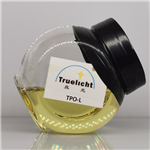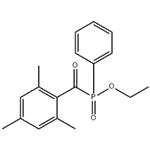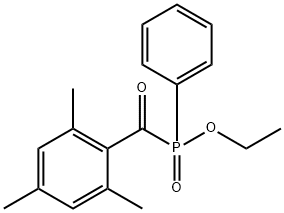Ethyl (2,4,6-trimethylbenzoyl) phenylphosphinate: applications and toxicology
Aug 10,2023
General Description
Ethyl (2,4,6-trimethylbenzoyl) phenylphosphinate has various applications in different fields. It is commonly used as a photoinitiator in the development of biobased thermoresponsive shape-memory polymers and in the radical photopolymerization of vanillin derivatives for 3D printing. It enables the creation of environmentally friendly and responsive materials with desirable characteristics for these applications, such as optical printing. In terms of toxicology, ethyl (2,4,6-trimethylbenzoyl) phenylphosphinate has low toxicity. Ingesting large quantities can cause poisoning, but the symptoms are mild and easily treatable. To minimize the risk of exposure, it is advised to avoid contact with the skin or eyes.

Figure 1. Ethyl (2,4,6-trimethylbenzoyl) phenylphosphinate
Applications
Photoinitiator
Ethyl (2,4,6-trimethylbenzoyl) phenylphosphinate is used as a photoinitiator in the development of biobased thermoresponsive shape-memory polymers. A study aimed to find the optimal composition of photopolymers with thermo-responsive properties using THFA and C13-MA as main components. Ethyl (2,4,6-trimethylbenzoyl) phenylphosphinate was chosen for its high absorption wavelength, ensuring a high reaction rate. Unlike traditional methods, no organic solvents were used in the preparation of these photopolymers, making them more environmentally friendly. Increasing the THFA content resulted in improved mechanical and thermal properties, as well as a higher rate of photocuring. To enhance flexibility and reduce brittleness, a small amount of dithiol was added. The research explored various compositions to determine the best mixture and identify the threshold beyond which further THFA increase became ineffective. These biobased photopolymers have the potential to replace petroleum-derived thermoresponsive shape-memory polymers in a wide range of applications. Overall, this study highlights the development of environmentally friendly and responsive materials with promising properties. 1
3D printing
Ethyl (2,4,6-trimethylbenzoyl) phenylphosphinate is used in the radical photopolymerization of vanillin derivatives for 3D printing applications. A study focused on developing novel vanillin acrylate-based resins as biobased systems for optical 3D printing. By utilizing Ethyl (2,4,6-trimethylbenzoyl) phenylphosphinate, cross-linked polymers were synthesized by the radical photopolymerization of vanillin dimethacrylate and vanillin diacrylate. During the curing process with ultraviolet/visible irradiation, the changes in rheological properties were analyzed to understand the effects of solvent, photoinitiator, and vanillin derivative on cross-linking rate and network formation. Comparatively, vanillin diacrylate-based polymers exhibited improved properties such as higher yield of insoluble fraction, enhanced thermal stability, and better mechanical performance when compared to vanillin dimethacrylate-based polymers. Additionally, the vanillin diacrylate polymer film demonstrated a significant antimicrobial effect, albeit slightly weaker than chitosan film. The thermal and mechanical properties of the vanillin acrylate-based polymers were found to be comparable to commercially available petroleum-derived materials commonly used in optical 3D printing. Furthermore, vanillin diacrylate showed suitability for optical printing through the successful implementation of direct laser writing 3D lithography and microtransfer molding techniques. Overall, ETMP plays a crucial role in enabling the development of vanillin acrylate-based polymers with desirable characteristics for 3D printing applications, especially in the field of optical printing. 2
Toxicology
Ethyl (2,4,6-trimethylbenzoyl) phenylphosphinate is an organophosphorus compound with low toxicity. Ingesting large quantities of ethyl (2,4,6-trimethylbenzoyl) phenylphosphinate can cause poisoning, but the symptoms are mild and easily treatable. To minimize the risk of exposure, it is advised to avoid contact with the skin or eyes. Residual monomers and additives in cured materials can diffuse out and potentially have toxic effects when released into surrounding tissues. The cytotoxicity of 3D-printed resin groups containing ethyl (2,4,6-trimethylbenzoyl) phenylphosphinate was tested, and the group with the lowest cell viability was the one with the BAPO photoinitiator. BAPO has been found to exhibit higher cytotoxicity than CQ at concentrations greater than 10 μM. Similarly, the TPO showed high cytotoxicity at a concentration of 50 μM. On the other hand, the ethyl (2,4,6-trimethylbenzoyl) phenylphosphinate photoinitiator had the highest cell viability across all concentrations and showed lower cytotoxicity compared to other photoinitiators. Therefore, high concentrations of BAPO and TPO are not recommended for clinical applications, while ethyl (2,4,6-trimethylbenzoyl) phenylphosphinate shows promise for broad application in clinical practice. 3
Reference
1. Jaras J, Navaruckiene A, Ostrauskaite J. Thermoresponsive Shape-Memory Biobased Photopolymers of Tetrahydrofurfuryl Acrylate and Tridecyl Methacrylate. Materials (Basel), 2023, 16(6):2156.
2. Navaruckiene A, Skliutas E, Kasetaite S, Rek?tyt? S, Raudoniene V, Bridziuviene D, Malinauskas M, Ostrauskaite J. Vanillin Acrylate-Based Resins for Optical 3D Printing. Polymers (Basel), 2020, 12(2):397.
3. Kim GT, Go HB, Yu JH, Yang SY, Kim KM, Choi SH, Kwon JS. Cytotoxicity, Colour Stability and Dimensional Accuracy of 3D Printing Resin with Three Different Photoinitiators. Polymers (Basel), 2022, 14(5):979.
- Related articles
- Related Qustion
- Ethyl (2,4,6-trimethylbenzoyl) Phenylphosphinate: Characteristics, Preparation Methods and Difference with TPO Feb 27, 2024
Ethyl (2,4,6-trimethylbenzoyl) phenylphosphinate is a highly efficient yellow liquid photoinitiator suitable for various UV-curable applications with improved reactivity profiles.
- 2,4,6-trimethylbenzoylphenylphosphinic acid ethyl ester- Reaction / Application on synthetic works Nov 19, 2019
2,4,6-Trimethylbenzoylphenylphosphinic acid ethyl ester is a photoinitiator for UV curable coatings. It is also an important organic intermediate to synthetize substituted benzoylphenylphosphinic products.
Procaine is a local anesthetic that blocks nerve impulses but carries risks of toxicity and allergies. It also acts as an antioxidant in geriatric syndromes.....
Aug 9,2023APIRhodium complexes inhibit Aβ aggregation, JAK2 activity, and PPIs. More research needed for efficacy and safety. Cytotoxicity observed in mismatch repair-deficient cells.....
Aug 11,2023APIYou may like
Ethyl (2,4,6-trimethylbenzoyl) phenylphosphinate manufacturers
- Photoinitiator TPO-L
-

- $0.00 / 25Kg/Drum
- 2024-05-31
- CAS:84434-11-7
- Min. Order: 1KG
- Purity: 95%
- Supply Ability: 500mt/year
- PHOTO INITIATOR TRUELICHT TPO-L
-

- $0.00 / 1KG
- 2024-05-27
- CAS:84434-11-7
- Min. Order: 1drums
- Purity: 98%
- Supply Ability: 20 tons
- Ethyl (2,4,6-trimethylbenzoyl) phenylphosphinate
-

- $8.00 / 1kg
- 2024-04-05
- CAS:84434-11-7
- Min. Order: 1kg
- Purity: 99%
- Supply Ability: g-kg-tons, free sample is available




